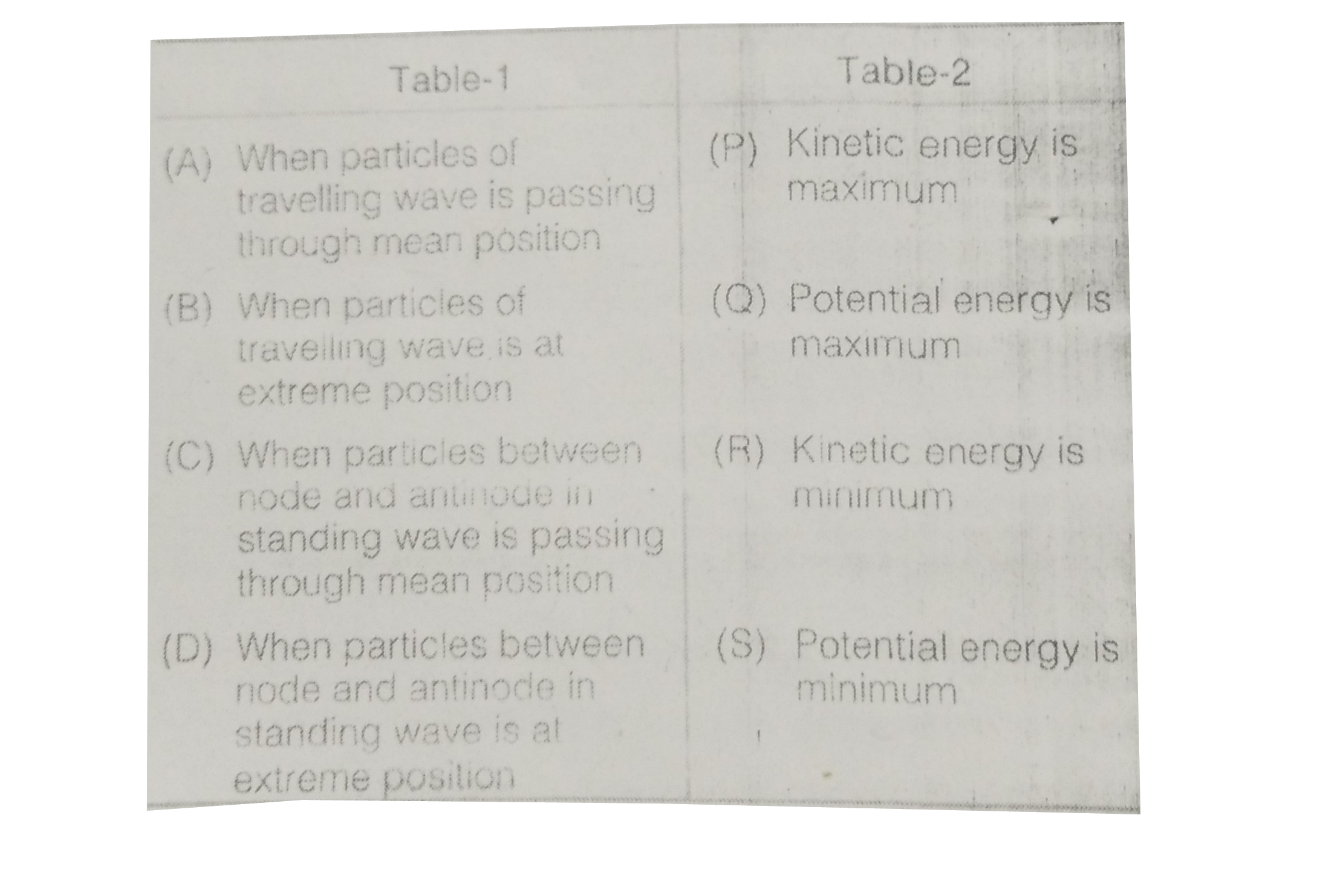The magnitude of acceleration of a simple harmnic oscillator when its kinetic energy and potential energy are same, if amplitude of acceleration is a0 is
a0√2
a0
a02
√3a02
To solve the problem, we need to find the magnitude of acceleration of a simple harmonic oscillator (SHO) when its kinetic energy (KE) and potential energy (PE) are equal, given that the amplitude of acceleration is a0.
1. Understanding the Relationship Between KE and PE:
In a simple harmonic oscillator, the total mechanical energy is conserved and is given by:
E=KE+PE
When the kinetic energy is equal to the potential energy, we can express this as:
KE=PE
Therefore, we can write:
KE=PE=E2
2. Formulas for Kinetic and Potential Energy:
The formulas for kinetic energy and potential energy in a simple harmonic oscillator are:
KE=12mω2(A2−y2)
PE=12mω2y2
where A is the amplitude and y is the displacement from the mean position.
3. Setting Up the Equation:
Since KE=PE, we can set the two equations equal to each other:
12mω2(A2−y2)=12mω2y2
Cancelling 12mω2 from both sides gives:
A2−y2=y2
Simplifying this leads to:
A2=2y2
Thus,
y2=A22⇒y=±A√2
4. Finding the Acceleration:
The acceleration a of a simple harmonic oscillator is given by:
a=−ω2y
Taking the magnitude, we have:
|a|=ω2|y|
Substituting y=A√2:
|a|=ω2(A√2)=ω2A√2
5. Relating to Amplitude of Acceleration:
We know that the maximum acceleration a0 is given by:
a0=ω2A
Therefore, we can express ω2A in terms of a0:
|a|=1√2a0
Final Result:
The magnitude of acceleration when the kinetic energy and potential energy are equal is:
|a|=a02
In a simple harmonic oscillator, the total mechanical energy is conserved and is given by:
E=KE+PE
When the kinetic energy is equal to the potential energy, we can express this as:
KE=PE
Therefore, we can write:
KE=PE=E2
The formulas for kinetic energy and potential energy in a simple harmonic oscillator are:
KE=12mω2(A2−y2)
PE=12mω2y2
where A is the amplitude and y is the displacement from the mean position.
Since KE=PE, we can set the two equations equal to each other:
12mω2(A2−y2)=12mω2y2
Cancelling 12mω2 from both sides gives:
A2−y2=y2
Simplifying this leads to:
A2=2y2
Thus,
y2=A22⇒y=±A√2
The acceleration a of a simple harmonic oscillator is given by:
a=−ω2y
Taking the magnitude, we have:
|a|=ω2|y|
Substituting y=A√2:
|a|=ω2(A√2)=ω2A√2
We know that the maximum acceleration a0 is given by:
a0=ω2A
Therefore, we can express ω2A in terms of a0:
|a|=1√2a0
The magnitude of acceleration when the kinetic energy and potential energy are equal is:
|a|=a02
Similar Questions
For simple Harmonic Oscillator, the potential energy is equal to kinetic energy
View SolutionIf the frequency of the acceleration of a simple harmonic oscillator if f_0 then the frequency of the potwntial energy is
View SolutionIn case of mechanical wave a particle oscillates and during oscillation its kinetic energy and potential energy changes.

View SolutionIf total energy of the same electron is E, then what would be its kinetic energy and potential energy .
View SolutionIf total energy of the same electron is E, then what would be its kinetic energy and potential energy .
View SolutionThe maximum acceleration of a simple harmonic oscillator is a0 and maximum velocity is v0. What is the amplitude?
View SolutionIf the total energy of a simple harmonic oscillator is E, then its potential energy, when it is halfway to its endpoint will be
View SolutionOne moving electron when comes closer to other stationary electron, then its kinetic energy and potential energy respectively……and…….
View SolutionWhen a proton is accelerated with 1 volt potential difference, then its kinetic energy is
View SolutionWhen a proton is accelerated through 1V, then its kinetic energy will be
View Solution